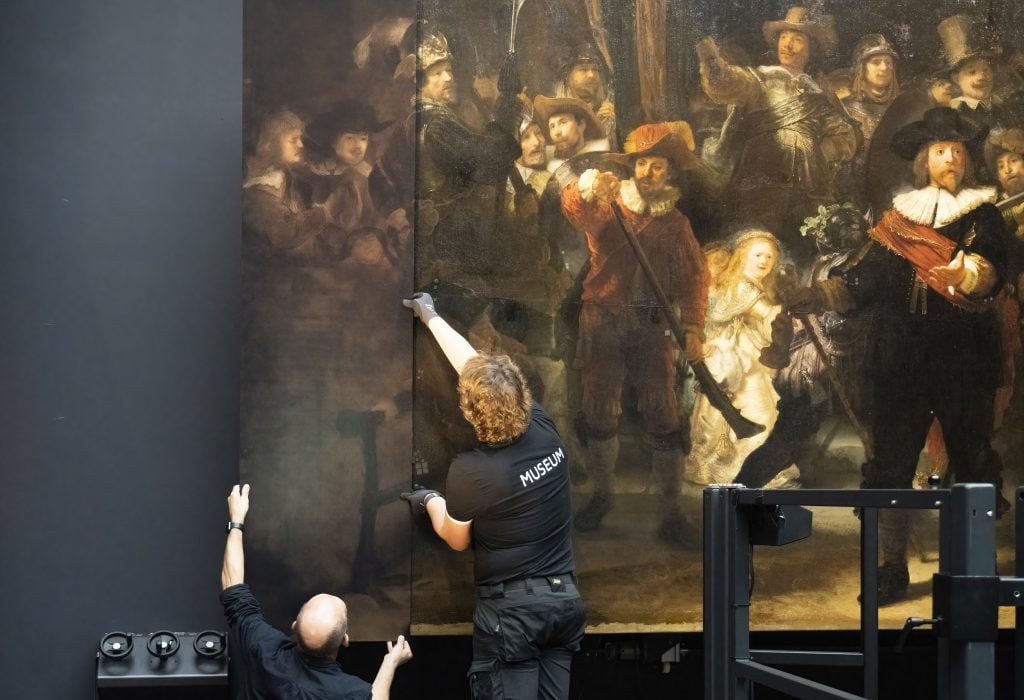Art World
Scientists Discover the Secret Ingredient in Rembrandt’s Luminous ‘The Night Watch’
The revelation comes via an ongoing restoration and analysis project.

Scientists have finally figured out how Rembrandt achieved the lustrous sheen effect in his iconic artwork The Night Watch: arsenic. The naturally occurring toxic chemical was first discovered in the painting during Operation Night Watch, an ongoing project conducted by scientists at the Rijksmuseum and the University of Amsterdam. The operation focused on intense and technological examination of the 17th century masterpiece using various non-invasive analytical imaging techniques such as x-ray scans, along with paint sample research.
A massive painting measuring 12-by-14.5 feet, The Night Watch depicts a group portrait of a civic guard company, transformed into a dynamic drama by Rembrandt’s masterful shadow play. The painting’s central figures are Captain Frans Banninck Cocq, dressed in black, with his lieutenant Willem van Ruytenburch standing to his left dressed in a champagne colored coat with intricate golden embroidery. The arsenous pigment was found in van Rutenburch’s embroidered garments, lending them a distinctive sheen.
The chemists who made the discovery shared their findings in a study published in the journal Heritage Science. The research team initially believed that Rembrandt used orpiment for yellow hues and realgar for red hues in the details of The Night Watch. However, they discovered the presence of pararealgar and semi-amorphous pararealgar, both arsenic sulfide minerals, in this area of the painting. They concluded that Rembrandt blended these arsenic sulfide pigments with other pigments to create a realistic golden luster. The shine of arsenic sulfide minerals is primarily due to their crystal structure and composition

Crowds gather in front of The Night Watch by Rembrandt at the Rijksmuseum in Amsterdam. Photo: Santi Visalli/Getty Images.
While other Dutch still-lifes of the era also contained arsenic, it was mostly used for painting fruits and flowers. Rembrandt’s use of arsenous pigment for portraiture was innovative. Researchers also compared The Night Watch to paint samples from other artists in the Rijksmuseum’s collection known to use arsenic sulfides, finding a similar pigment mixture in a painting by Willem Kalf, Rembrandt’s Dutch Golden Age contemporary. The study cites this discovery as “evidence that a variety of natural and artificial arsenic sulfides were manufactured and traded during Rembrandt’s time and were available in Amsterdam.” This suggests that using natural and artificial arsenic sulfides to create pigments was likely more common during the Dutch Golden Age than previously believed.
Rembrandt van Rijn was the foremost portrait artist of the Dutch Golden Age, with The Night Watch as his largest and most celebrated artwork. He set a trend in Dutch art by painting every individual of a group engaged in their own action. A Rembrandt masterpiece was rediscovered last year after missing for almost 75 years. Even centuries later, the Dutch master’s secrets continue to be revealed.





